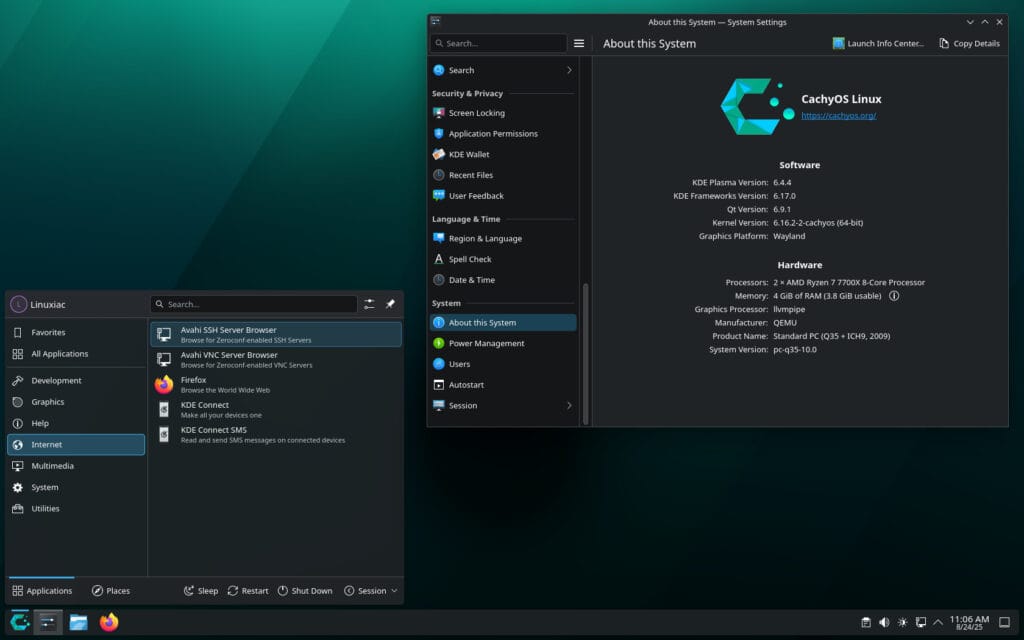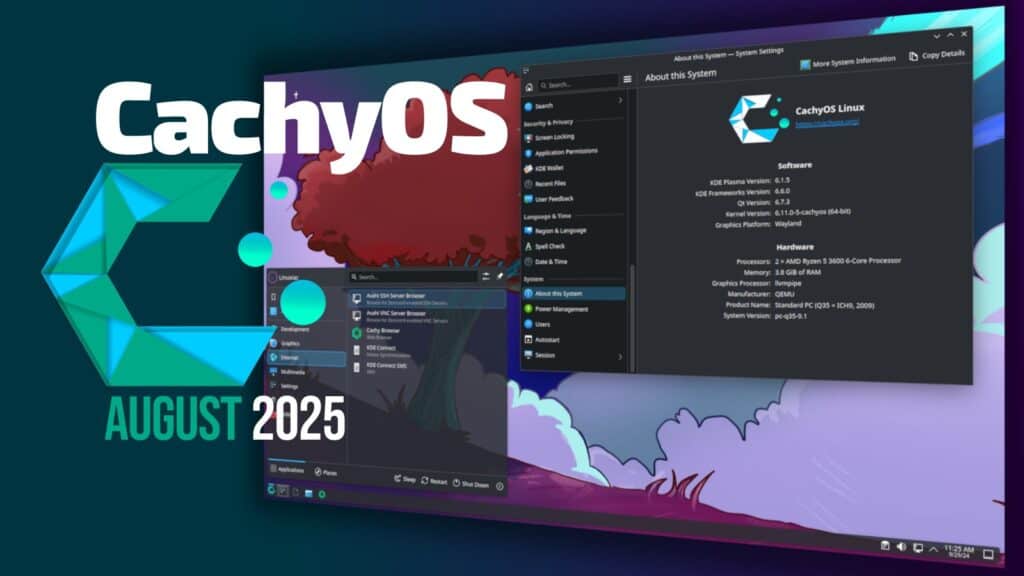Over a month after its previous July update, and after topping DistroWatch’s rankings, the Arch-based performance-focused CachyOS has released its sixth refreshed ISO snapshot for the year.
One of the biggest additions accompanying the announcement is packages.cachyos.org, a new dashboard that lets users explore the current package set across repositories and architectures. Each package entry shows whether it comes directly from Arch Linux, has been modified, or originates from AUR.
To further improve transparency, the PKGBUILD source is displayed, and a binary download link is available for manual inspection or installation.
On the stability front, recent issues with the latest stable kernel prompted a major shift. Starting with this release, installations will include linux-cachyos-lts as a fallback kernel, while the live ISO now boots exclusively with the 6.12 LTS kernel to avoid graphics-related problems during setup.
The developers acknowledge that this approach could create compatibility gaps for newer hardware, such as GPUs requiring the latest kernel, and they are considering bundling a second kernel in future ISOs.
On the desktop side, the default KDE environment comes with the latest version of Plasma 6.4.4, accompanied by Frameworks 6.17 and KDE Gear app collections 25.08.

Moreover, the Niri scrollable-tiling Wayland compositor has been added as a desktop option in the online installer, complete with preconfigured dotfiles for smoother out-of-the-box use.
In addition, GRUB installations on Btrfs now automatically enable bootable snapshots, a feature previously reserved for Limine, improving recovery options after problematic updates.
For NVIDIA hardware, S0ix sleep support is now enabled, bringing low-power standby while still allowing background tasks like notifications to run.
Another notable change is the introduction of Cachy-Update, a fork of arch-update, now integrated into the Welcome app’s “Tweaks” page. It provides a tray indicator for update notifications from both official repositories and the AUR. By default, it checks frequently, though the team is considering extending the interval to every 2–5 days based on feedback.
On the gaming side, Proton-CachyOS has gained several new features. These include a DLSS upgrader, XeSS upgrader, improved PhysX support with bundled NVIDIA libraries, and the ability to enable FSR 4 on RDNA3 GPUs. Shader caching is now supported on a per-game basis, reducing stutter after initial caching.
Plus, an optional dxvk-sarek backend is available for older GPUs without full Vulkan 1.3 support, though it comes with warnings against use in multiplayer titles with anti-cheat.
The release also addresses multiple Limine bootloader issues, including BIOS/MBR installation errors, uninitialized bootloader paths, and problems with Btrfs snapshots on GNOME. Windows dual-boot should now work out of the box on BIOS systems.
Lastly, the Launch Installer button has been hardened with IPv4/IPv6 fallback pings to improve reliability.
For more information, see the announcement.
As an Arch-based Linux distro, existing users can grab all these improvements with a simple sudo pacman -Syu command. For those opting for a fresh install, the updated ISO files are available for download via CachyOS’s SourceForge mirrors.
